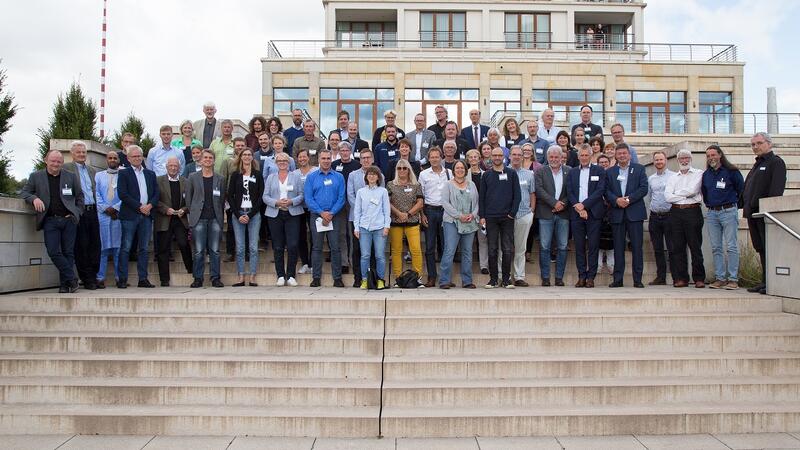Wadden Sea Day: International cooperation is key to protecting vital Flyway ecosystems.

Global cooperation for migratory bird conservation was the theme of this year's Wadden Sea Day, held at the Atlantic Hotel in Wilhelmshaven on Thursday 26th August, with a focus on the "Wadden Sea Flyway Initiative" (WSFI). Launched in 2012, the WSFI has put international collaboration along the East Atlantic Flyway from Africa to the Arctic on firm footing.
80 participants from all along the Flyway were welcomed by Peter Südbeck, head of the Lower Saxony Wadden Sea National Park Authority, who stressed in his welcoming speech that the protection of migratory birds cannot be achieved through isolated measures at single sites but must take into account the entire migration route from the Arctic breeding grounds via the central resting place of the Wadden Sea to the wintering grounds, especially in West Africa. This was reflected by the inclusion of speakers from the Wadden Sea, Russia, Senegal, and Great Britain, making this a truly international event.
Migratory birds are a central theme in the Trilateral Cooperation for the protection of the Wadden Sea World Heritage Site. They symbolise both the importance and the vulnerability of the network of natural habitats they depend on during their annual migration and are key ambassadors for the need to combine our conservation efforts.
Science, management, policy, and economics experts met to discuss the results achieved by the WSFI so far, as well as projects to be prioritised in the future. During their presentations Tim Badman of the International Union of Conservation of Nature (IUCN), Jacques Trouvilliez and his colleagues of UNEP-AEWA, as well as migratory bird experts from various international organisations, all touched upon the supreme importance of international cooperation and congratulated the WSFI on their work in bringing together partners across the Flyway to work towards conserving migratory birds and their coastal habitats.
World-class research from the Netherlands, Mauritania, and the Russian Arctic, headed by Prof Theunis Piersma of the Global Flyway Network, highlighted that in these times of climate change, migratory birds depend on sufficient food resources at staging sites, which can allow them to adapt the timing and speed of their migrations to new conditions at their wintering and breeding sites.
Kristine Meise, of the Common Wadden Sea Secretariat, presented the planned ‘Climate resilient East Atlantic Flyway Project’, which is currently in development by a number of WSFI partners. The project aims to improve living conditions for migratory birds at critical sites along the flyway, as well as increasing ecosystem services for the people dependent on these sites. The intensive exchange during events such as the Wadden Sea Day, with international partners in the fields of research, management, and policy, provides the starting block for upscaling successful initiatives that aim to protect the important coastal wetland ecosystems that migratory birds rely upon.
As Bernard Baerends, Executive Secretary of the Common Wadden Sea Secretariat, summarised: "Migratory birds connect people across countries and cultures, highlighted by the more than 12,000 volunteers involved in the vital total bird counts along the entire Flyway, conducted every three years. While the Wadden Sea World Heritage Site may represent only a small part of the East Atlantic migration route, this event has shown that our local conservation efforts can have a positive impact on the entire Flyway and vice versa.”
The Wadden Sea Day has been jointly organised by the Lower Saxony Wadden Sea National Park Authority and the Common Wadden Sea Secretariat since 2006.
